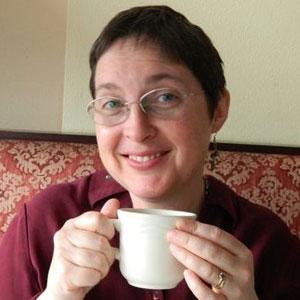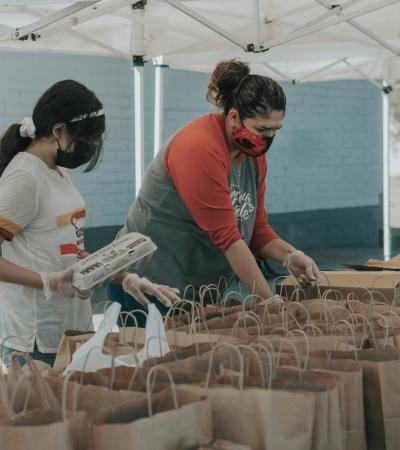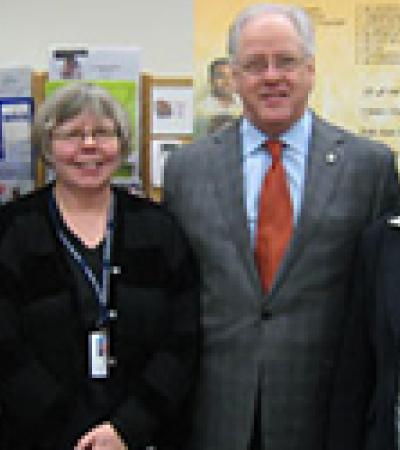We’ve all been there. You plan a great program, and only a handful of people show up—or no one does. Maybe something that has always done well in the past mysteriously fails to draw an audience. Maybe you start something new specifically because someone asked for it—and still it doesn’t get off the ground. You’re doing everything you can think of and everything your schedule and your budget allow to promote your events to potential audiences. How can you draw people to your programs?

Start with Your Desired Outcome
A lot of us—including me—tend to approach our programming a bit backward: we do programming we want to do, or that’s easy for us to do, or that worked in our last job, or that was already in place when we got there. While I was finishing my MLS at Indiana University and working as Curator of Education at the Mathers Museum of World Cultures on the Indiana University campus, I was lucky to get some training in Outcomes Based Planning and Evaluation (OBPE), which is more and more often required by granting agencies. OBPE turns the approach around, beginning instead with what needs or lacks are in the community for specific groups of people, and culminating in real outcomes in people’s lives. The process provides both quantitative and qualitative evidence (i.e., statistics and experiences) of the difference the library makes for its users, in ways that will make sense to the people who make decisions about your work.
The idea is to: design your programming by starting with who is in your community and what they need, or what is lacking from other avenues; look at what resources you have (or could create with partners) that would do the best job of addressing those needs by encouraging changes in people’s behavior and/or attitudes; and then plan how you will measure or track those changes. If you start your program planning by connecting with the people you’re serving or want to serve (or at least with other people working with them), you are more likely to: develop programming that is really meaningful and attractive to them; schedule and locate your programs effectively (and possibly include a transportation component) because you know more about their schedules, obligations, and habits; and c) connect more effectively with the right people with your marketing, and benefit more powerfully from word-of-mouth (always the best PR).
Consider Your Audience
OBPE was developed for grant-writing, but it can also motivate your everyday program planning. In practice, it can be as simple as noticing that a certain kind of book is circing heavily, getting an idea about how you could tie in to that interest with a program, and talking to the people checking out those books about times and places that work for them. That is the kind of thing most of us do all the time. One really simple version of this approach is for a children’s librarian to say, “Hey, our princess books are flying off the shelves, and I read somewhere about libraries doing Princess Parties. There’s an audience here for a Princess Party! I can do that! When would be a good day/time?”
OBPE adds three more elements to this familiar process. First, you think more about what the needs really are. Then you articulate the outcomes your program will produce—the changes that will happen in people’s lives because they participate in the program. Then you build in ways to measure the outcomes you planned for, so that you can share the effectiveness of what you do with current and potential stakeholders. All of these things together make an OBPE approach surprisingly powerful, not just for designing programs that connect with your audiences, but for giving you persuasive evidence of what your work in the library means for your community. It gives you the data and the stories that you can take to the decision-makers, policy-makers, funders, and tax-payers whose support and understanding is crucial to your mission.
Let’s use the Princess Party example. What does the popularity of princess books represent? What are readers and their families looking for and delighting in when they choose these books? We could delve into issues of gender representation, standards of beauty, and class privilege; or we could just say that it’s fun to dress up, feel pretty and magical, and act out our own ideas of what it means to be a girl, be beautiful, and be powerful (which is what a lot of the new princess stories do). Your program plan for the Princess Party can include the outcome that participants build personalized, concrete connections with reading and narrative by dressing and acting as a character and imagining themselves in that world. You can plan to evaluate that desired outcome by attendance, by photographic documentation of the participants, and by participant comments collected on feedback forms (whether paper or online) and informally in person. You end with numbers and narratives about what a difference a vibrant relationship with stories makes for young readers and their families (not to mention some great pictures to share with your local newspaper), and about how the library makes that difference.
Thinking in these ways about our programs—starting from people’s needs and ending with changes in their lives—keeps us audience-focused. It makes us get to know our audiences better, rather than just guessing about what people want or going on a few things we hear at the desk. It also encourages us to get to know the other people who are serving them, too, and leads naturally to stronger partnerships focused on community needs and meaningful outcomes. All of these things make our programs more effective.
Incorporate OBPE into Your Planning
How do you do it? Like most things worth the effort, it takes a little more time to develop but reaps tremendous benefits. You learn about needs in your community by studying demographic statistics and policy reports, but most importantly by talking to people. The experts will be other people who work with the populations you serve (or want to reach), and always the people themselves. Children, youth, families, and seniors are the easiest to find, since so many agencies are dedicated to their needs, including in rural areas. For the adults, talk with service organizations, social and activity clubs, and community associations. Go where they are. If you want to reach people whose language you don’t speak or culture you don’t share, build relationships with people who do, whether it’s a service agency, a community center, or the person who runs the market or restaurant where people gather. Do your best to make off-desk time, and make sure your supervisors know how important these kinds of connections are for the library’s work. Once you’ve been doing OBPE, you’ll have persuasive evidence to show them. If you don’t have it in hand yet for your own programs, use resources from other libraries that do.
Some of the programming mistakes (or perhaps “less successful experiments”) I have made in my library career have stemmed from not knowing enough about my audience and not asking enough people enough questions. In my first job out of library school, I became the manager of a small-town library branch in Woodland, Washington, part of the Fort Vancouver Regional Library District (FVRL). Woodland is located right on the I-5 corridor, twenty minutes away from Longview to the north and Vancouver to the south. The population broke 5,000 toward the end of my time there. There is no movie theater, no department store, no mall. Most people in Woodland do their main shopping and recreation elsewhere, which is a hard habit to combat.
I love movies, and had success in my previous job at the museum with a film and food series in partnership with the local library. FVRL did not purchase public performance licenses for its branches, most of which relied on the Friends if they wanted to be able to show films. Through an unexpected sequence of events I ended up with a movie license provided by my Young Adult Advisory Board. I was excited about showing movies, and so were most patrons I talked about it with as I chose my titles (for a different age-group each month) and set my schedule. The catch was that the terms of the license stipulated that we could show films only in the library building itself—and the Woodland Libraryhas fewer than 2,400sf, is a 100-year-old building with two stories and no elevator, and has no dedicated program space other than an open area upstairs with a sectional sofa and story time carpet. We were not allowed to use the next-door Community Center, where most of our programs were held (I asked…). This meant I could only show films when the library was closed, which meant evenings or weekends. In a community facing some serious economic challenges, the prospect of a free movie night or matinee should have been a big draw—but I rarely had more than a few people come, and often had none, meaning I would stay late or come in on a day off to set up the projector, screen, and speakers, for “nothing.”
What was the problem? Well, film series do tend to take time to build up an audience; but this is really a fine illustration of program planning that is simply backwards from an OBPE perspective. I wanted to show movies, and when the chance opened up I took it. It seemed as if the program would meet a need, since there was no movie theater in town and many of my patrons were struggling to make ends meet. What better than free movies at the library? But the idea came from me, not from them, and it turned out that people just weren’t going to go back out of an evening (or a weekend) to climb the stairs in our small library and sit on a sofa in the one space we had available to show films, when they could just sit on the sofa at home and do almost the same thing. The restrictions in the license and in my physical space made movie screenings make less sense for my library.
When we start with people and their needs (rather than starting with the program idea itself), we get two bonuses: we have a better idea of what might keep people from coming to a library program; and we’re more likely to connect with the people who would be most interested in coming.
Even when people really like the idea of a program—even when they ask for it themselves—the reality might be that their schedules, obligations, and habits keep them from coming at a time that works for you to do the event, or they might not be able to get to you. Transportation and parking are bigger factors for our audiences than we often realize, especially in a difficult economy when people might have to cut corners on vehicles or vehicle repairs, and public transportation has its share of budget cuts. You might discover that your location is a problem for particular audiences, and see about partnering for off-site outreach.
Awareness can be one of the biggest obstacles to attendance. OBPE prompts you to make the kinds of connections that help get the word out, and that let you know where your fliers or radio PSAs or in-person talks will do the most good. Once the right people hear about what you’re doing (possibly because they have met you or know someone who has), they’ll do the rest of the work for you.
Find Out More
One of the best ways to learn more about OBPE is to take the “Shaping Outcomes” online course developed by Indiana University-Purdue University Indianapolis (IUPUI) for IMLS. I was fortunate to participate in the pilot course that led to “Shaping Outcomes,” after having written an OBPE logic model for a successful Museums for America grant for the Mathers Museum. Kristine R. Brancolini’s presentation “What Difference Do We Make? Outcome Based Evaluations” is another valuable introduction, and can be downloaded from her website.
Planning a program that delights people or otherwise enriches their lives engages all our creativity and expertise, and connects people to the library in the best way. It’s why we love what we do. Orienting your work to the OBPE model can help create the successes that make all the difference.



